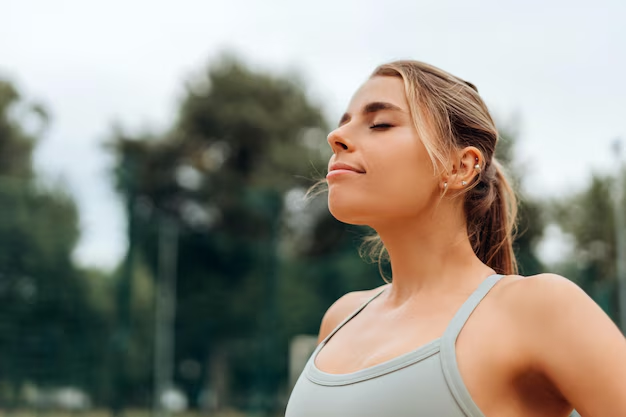Finding Peace: Practical Ways to Calm Anxiety
Anxiety can feel like an uninvited guest that overstays its welcome, affecting your mind, body, and daily functioning. It’s something many people experience, but knowing how to navigate and calm anxious feelings can be transformative. Whether it’s a sudden surge of anxiety or a consistent undercurrent, understanding ways to manage it can empower you to regain control and soothe your mind. In this article, we explore effective and realistic strategies for calming anxiety, tailored for anyone looking to find peace in the midst of life’s storms.
Understanding Anxiety: Recognizing the Signs
Before diving into calming techniques, it's crucial to understand what anxiety is and how it manifests. Anxiety is a natural response to stress, characterized by feelings of tension, worried thoughts, and physical changes like increased blood pressure. Recognizing anxiety can be the first step toward managing it.
Common Symptoms of Anxiety:
- Physical Symptoms: Increased heart rate, sweating, trembling, shortness of breath, fatigue, and headaches.
- Emotional Symptoms: Feelings of dread, irritability, or restlessness.
- Cognitive Symptoms: Racing thoughts, excessive worry, difficulty concentrating, and insomnia.
By identifying these symptoms, you can more readily apply strategies to manage your anxiety.
Techniques for Calming Anxiety
When anxiety strikes, having a toolkit of strategies can provide immediate and long-term relief. Let’s explore techniques that you can integrate into your daily life to manage anxiety effectively.
Mindfulness and Meditation
Mindfulness is the practice of staying present and fully engaging with the current moment. This technique helps combat anxiety by breaking the cycle of worry and redirecting focus.
- Practice Deep Breathing: Deep breathing techniques can calm your nervous system. Try inhaling slowly through your nose, holding for a few seconds, and exhaling slowly through your mouth.
- Guided Meditation: Listening to guided meditations can help ground your thoughts and bring a sense of peace. Consider setting aside 10-15 minutes each day for meditation.
Cognitive Behavioral Strategies
Cognitive Behavioral Techniques (CBT) help in reframing negative thought patterns that contribute to anxiety.
- Challenge Negative Thoughts: Whenever you feel anxious, identify the thought causing the anxiety and challenge its validity. Ask yourself if your fears are realistic or if there’s another perspective.
- Use Affirmations: Positive affirmations can replace negative self-talk. Phrases like “I am safe,” or “I can handle this,” can be powerful reminders.
Physical Activity
Physical activity is a natural anxiety reliever. Exercise releases endorphins, improving mood and reducing stress.
- Regular Exercise: Engage in activities you enjoy, whether it’s jogging, yoga, or dancing. Aim for at least 30 minutes a day.
- Progressive Muscle Relaxation: This involves tensing and then slowly relaxing each muscle group in your body, promoting overall tension release.
Lifestyle Adjustments
Often, simple lifestyle changes can significantly impact your anxiety levels.
- Healthy Diet: A balanced diet with plenty of fruits, vegetables, and whole grains can influence your mood positively.
- Limit Stimulants: Limit caffeine and sugar, both of which can exacerbate anxiety symptoms.
Social Connections and Support
Isolation can heighten anxiety, whereas connecting with others can offer a sense of comfort and grounding.
- Reach Out: Speak with friends, family, or support groups. Sharing your thoughts can alleviate feelings of loneliness.
- Therapy Options: Consider therapy options where you can express feelings in a safe space with a professional who can guide you in managing anxiety.
The Role of Routine and Structure
Creating a routine can help manage anxiety by bringing predictability and stability into your life. Routines can serve as a comforting structure to help calm the chaos of anxiety.
- Establish a Sleep Routine: Aim for 7-9 hours of sleep each night by going to bed and waking up at consistent times.
- Daily Scheduling: Allocate time for work, relaxation, and activities you enjoy, giving yourself something to look forward to.
Alternative Methods for Anxiety Relief
While traditional methods work for many, some individuals find relief through alternative practices.
Aromatherapy
Essential oils like lavender and chamomile have calming properties. Using a diffuser or applying diluted oils to your skin can provide soothing sensations.
Art and Music Therapy
Engaging in creative activities can shift focus away from stressors, offering a therapeutic outlet for expression.
- Art Journaling: Sketch or write in a format that allows for the expression of emotions without judgment.
- Music Engagement: Listening to or playing music can elevate mood and reduce tension.
Creating a Personalized Anxiety Management Plan
Understanding that everyone’s journey with anxiety is unique is essential. Here’s how you can tailor a plan that fits your needs:
- Identify Triggers: Keep a journal to note when and where you feel anxious. Understanding patterns helps in avoiding or managing those situations.
- Select Techniques: Choose a combination of the strategies listed above that resonate with you and your lifestyle.
- Set Realistic Goals: Set achievable goals for implementing these techniques, and don’t forget to celebrate progress, however small.
By designing a plan that reflects your personal needs, you have a roadmap that empowers you to navigate through anxiety with confidence.
🗒️ Key Takeaways:
- Recognize Symptoms: Understand physical, emotional, and cognitive signs of anxiety.
- Calm Mind Strategies: Try mindfulness, CBT, and physical exercises.
- Lifestyle IMPACT: Focus on diet, routines, and sleep.
- Reach Out: Maintain social connections and seek professional help if necessary.
- Customize Your Plan: Identify triggers, select strategies, and set goals for your anxiety journey.
Implementing these practical tips can help you find peace, offering gentle solace in the storm of anxiety. Remember, grappling with anxiety is a journey, often with ups and downs, but with patience and persistence, finding calm is attainable. 🌿
